Blast from the Past: History of the Bazooka
April 6th, 2021
8 minute read
Anyone who grew up with toy soldiers from the 1950s to the 1990s likely remembers that one of the soldiers was armed with a “bazooka,” which provided the soldier with the ability to take out “enemy” tanks and to destroy bunkers. The toy version wasn’t particularly accurate, as the scale of the weapon was wrong, and the bazooka man was generally not considered as “cool” as some of the other little green army men, but everyone who took part in living room invasions certainly wanted to have a bazooka just in case.
The bazooka may have been part of the invasion of the army men in the 1950s, but the weapon dated to more than a decade earlier when the real world weapon entered service in World War II with the U.S. Army. Now decades after being retired and replaced by more modern anti-tank weapons, the bazooka remains iconic. Also known to its users as the “Stovepipe,” the tube anti-tank weapon was developed as the first generation of rocket propelled anti-tank weapons.
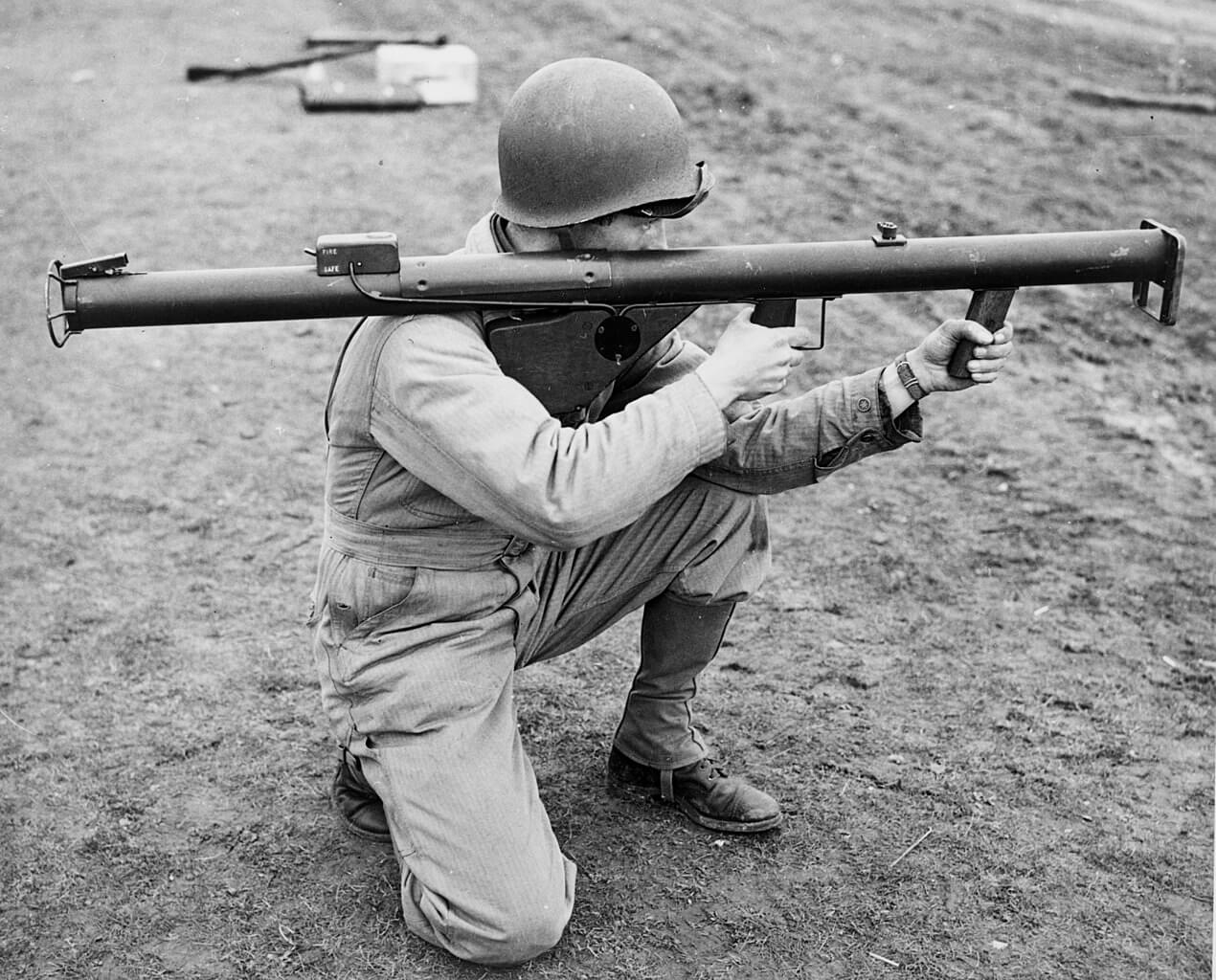
It was truly a “first” — something that can be said only about a handful of weapons through the ages.
Prior to the First World War there was simply no need for an anti-tank weapon as there were no tanks. However, soon after the armored behemoths appeared to help break through enemy trenches, there were efforts to counter it.
The original anti-tank weapons employed by the infantry primarily consisted of oversized rifles. The first anti-tank rifle was the German Mauser 13mm which was known as the Tankgewehr M1918. Often shortened to T-Gewehr, it was designed to take out armored vehicles. By the end of the fighting, nearly 16,000 were made. However, it was little more than a really big bolt-action rifle.
Interesting, little effort was made to do much else, and in the interwar era, several other nations — including the Soviet Union, Finland Great Britain — also developed similar rifles. Many began as bolt-action, but gradually there were efforts to develop semi-automatic rifles as well. Finland knew it might face Soviet tanks if it hoped to retain its independence and since it couldn’t build tanks, it went forward with the 20mm semi-automatic Lahti, while Great Britain still employed a rather simplistic bolt-action operating system with its .55-caliber Boys Anti-Tank Rifle. Each had been relatively effective in the mid-1930s but by opening stages of the Second World War the large-bore rifles’ time had passed.
In the case of the Lahti the ingenious Finnish soldiers didn’t let it go to waste however, and instead used it a very high-powered sniper weapon – decades before the Barrett .50 caliber!
Enter the Bazooka
The United States had been a late entrant during the First World War, and to say it was unprepared for the war was a vast understatement. New small arms such as the Browning M1917 machine gun and Browning Automatic Rifle were only entering production, whilst military planners saw that there would be a need to counter the newly developed tank, but also allow the infantry to take out heavily fortified positions. It was during the war that Dr. Robert H. Goddard began work on a tube-fired rocket.
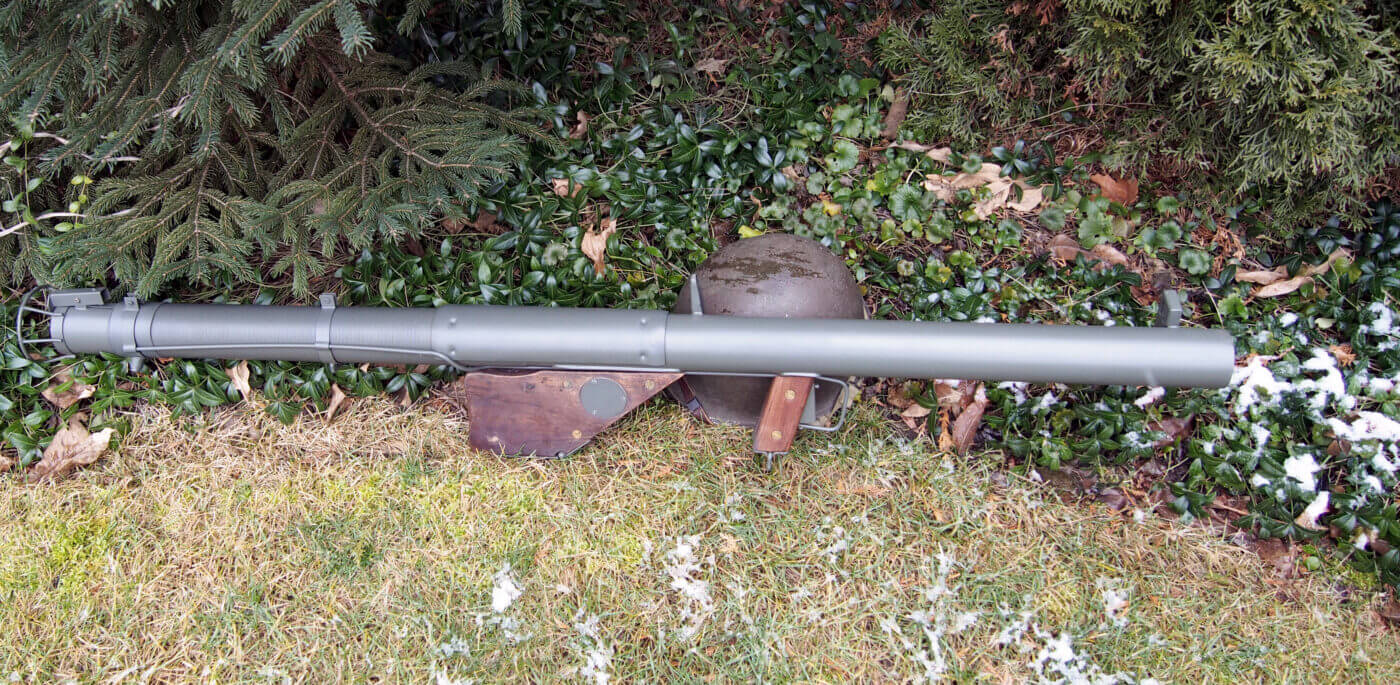
Goddard’s efforts were actually demonstrated to the U.S. Army Signal Corps at Aberdeen Proving Ground, Maryland on November 6, 1918 — but as the Armistice was signed just five days later, the project was put on hold. Little progress was made in the next two decades and it wasn’t until the war broke out again in Europe that the U.S. military opted to go forward with the development of a tube-fired rocket.
However, the use of a tube was essentially an afterthought as it was considered only as it provided the launch platform for the Army’s newly developed shaped charge, which was combined with a small rocket. It was a case where ordnance was developed and needed a safe delivery method. In this case the simple tube provided a way to protect the user from the rocket exhaust and also to aim the rocket-powered charge.
The result was the Rocket Launcher M1 as it was officially known by the United States Army. Soon it earned the nickname “bazooka.” It is believed the nickname came from a brass horn used by Bob Burns who was a popular comedian of the era. While some people have the mistaken belief that the nickname comes from Bazooka Joe, the reality is the hero of the bubble gum comics didn’t make his debut until the early 1950s – more than a decade after the bazooka entered service with the U.S. military.
Operation Torch was the bazooka’s debut. Landing with American troops in November 1942, the anti-tank gun was not a runaway success in North African campaign. One factor was that its M6 rocket was notoriously unreliable and required “refining.”
The much improved M6A1 rounds as well as the M1A1 launcher were just what the U.S. needed to take on German tanks and other armored vehicles, which had grown in size and armor thickness.
The improved M6A1 rocket and companion launcher were used in the Sicily campaign with greater success. It was able to allow infantry to successfully take on enemy armor. During the campaign in Italy, an M1A1 launcher was even credited with stopping a Tiger I tank, which was an impressive feat to say the least. While the bazooka lacked the power to directly confront Germany’s late-war armor like the King Tiger, it gave the infantryman a fighting chance. Many M1A1 launchers landed in Normady and participated in the liberation of Europe.
However, not everyone was instantly a fan of the platform.
General George S. Patton, who had famously praised the M1 Garand semi-automatic rifle and called it the “greatest battle implement ever devised,” was far more critical of the bazooka and he reportedly suggested, “the purpose of the bazooka is not to hunt tanks offensively, but to be used as a last resort in keeping tanks from overrunning infantry.”
German Panzerschreck
The problem for the bazooka was that like the anti-tank weapons that came before it, the planners attempted to address the current generation of tanks and didn’t look forward to ever more powerful armored vehicles. In other words the weapon wasn’t exactly “future proof” to take on the threats that could be coming down the road.
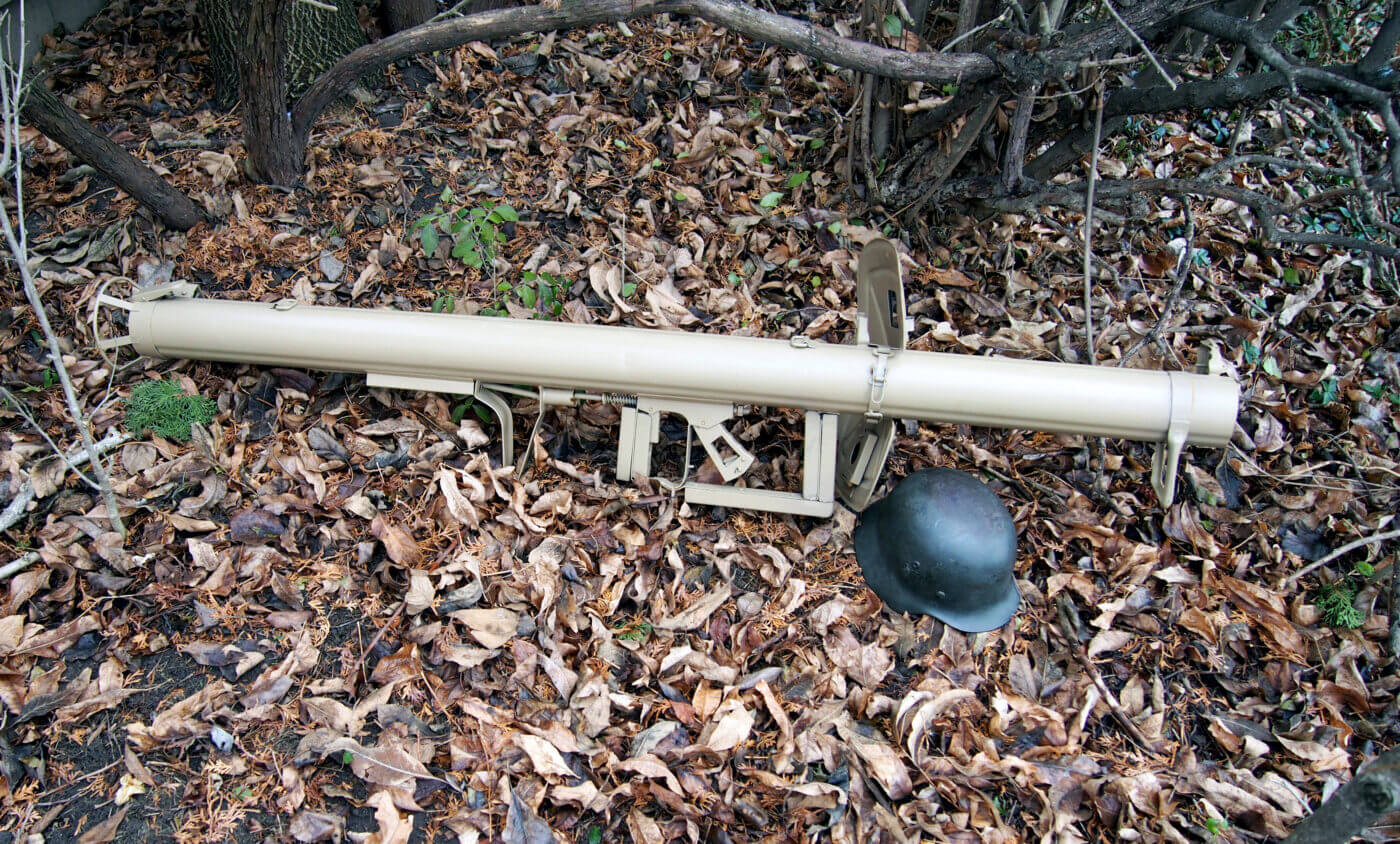
As a result, the U.S. Army’s bazooka was simply not powerful enough to take on Germany’s late war heavy tanks, and yet German planners saw the potential for such a weapon. When the Germans developed their own bazooka, they upsized it for improved stopping power.
During the North Africa campaign, the German Army captured some American M1 bazookas. The country’s arms designers and military men saw the potential, as well as the shortcomings, of the weapon. Instead of creating a bazooka clone, they upscaled the warhead to 88mm. This offered increased penetration of armored vehicles including tanks and halftracks. They named it the Panzerschreck that translates to “tank fright” in English.
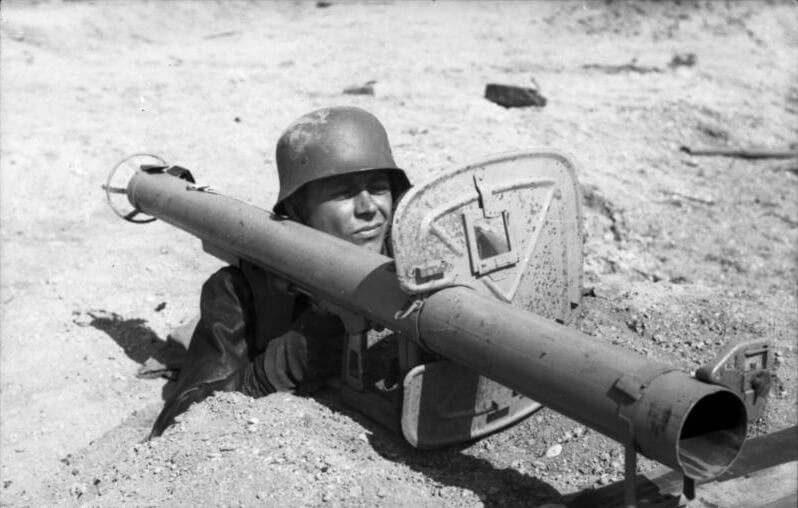
However, there was a downside to the German version. Panzerschreck rounds kept burning after launch, which could create a hazard for the soldier firing them. To address this, the German designers added a shield to protect the operator from the blast. The downside is the shield added weight to a soldier’s loadout that was already heavy. However, it was seen as a reasonable tradeoff that made for a effective weapon.
Post-War Bazookas
After the war, the United States military finally addressed the shortcomings and then went on to create a more powerful version — aptly named the M20 “Super Bazooka.” In this case the design went almost full-circle as the Americans had witnessed the success of the Panzerschreck. However, it could be argued that this was case of simply going even bigger with a larger bore and rocket, yet in this case the weapon was also lighter. Germany had to use steel in the production of the Panzerschreck, but the American designers were able to use aluminum, which reduced the weight quite significantly by nearly 20 percent.
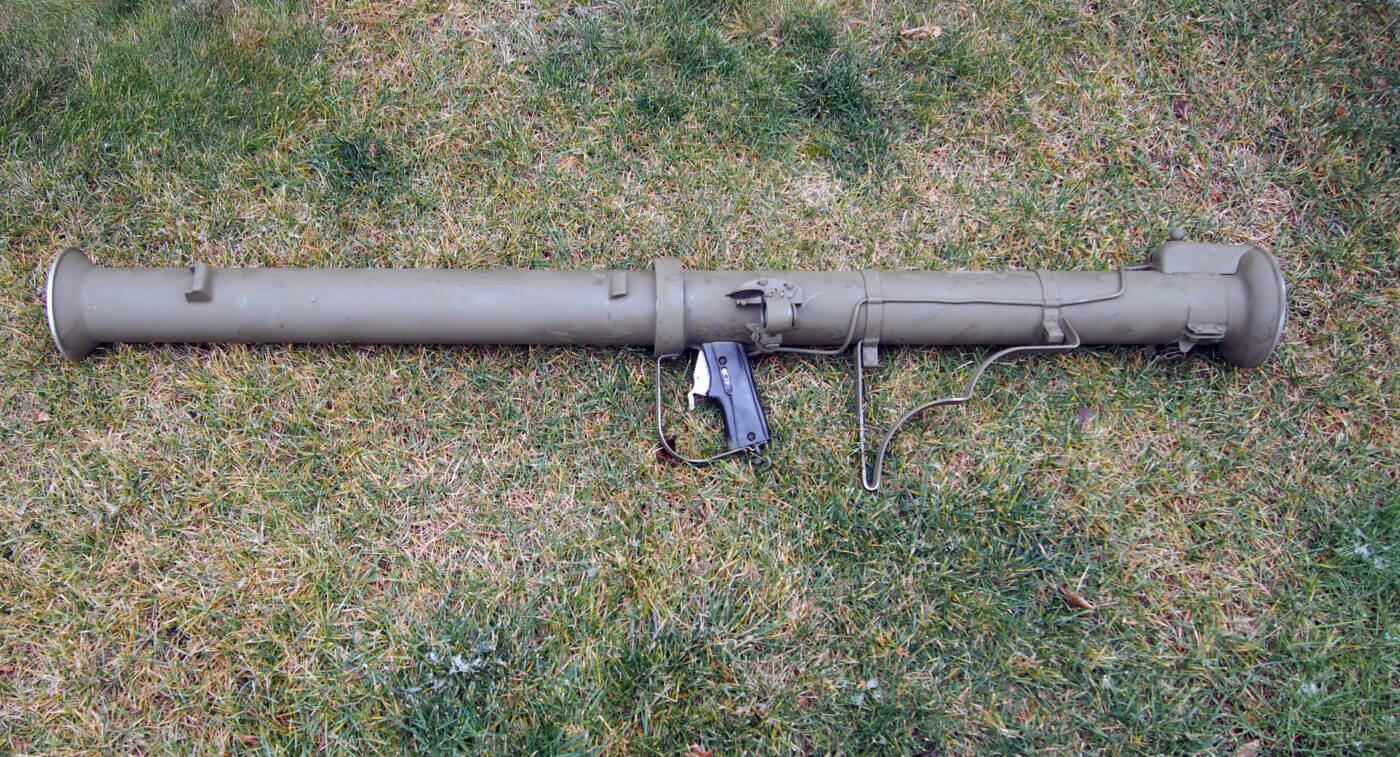
The M20 also didn’t require the bulky blast shield, while its rounds had a far greater range than their Second World War counterparts. To make it easier to transport and carry, the Super Bazooka was also designed so that it could be broken down into two parts.
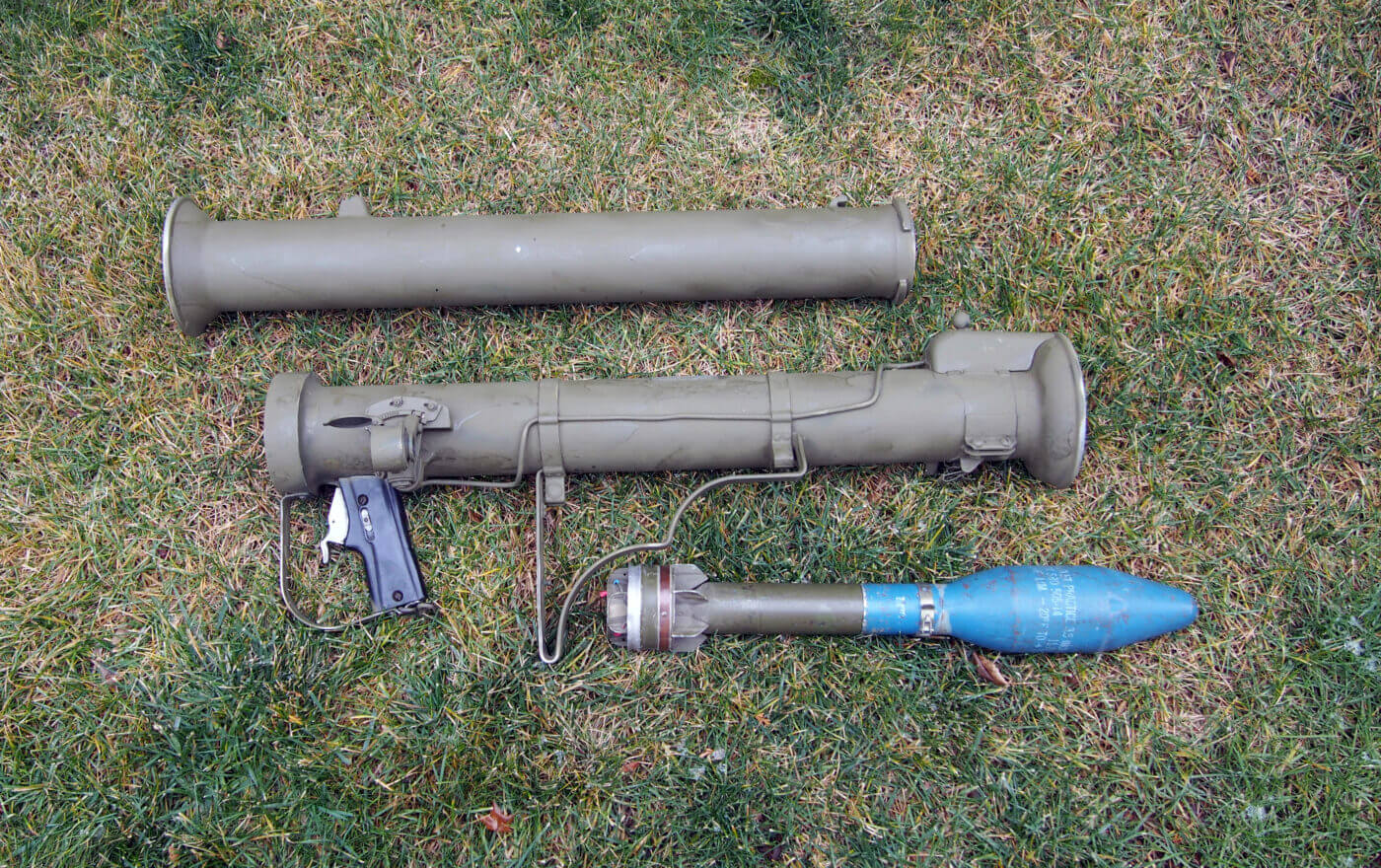
It proved to be a successful anti-tank platform that was also adopted by the militaries of Canada, Italy, France, the UK and Portugal. There are even reports that the Argentine Army fielded the aging M20s during the Falklands War in 1982.
Some nations even tried to improve upon the design.
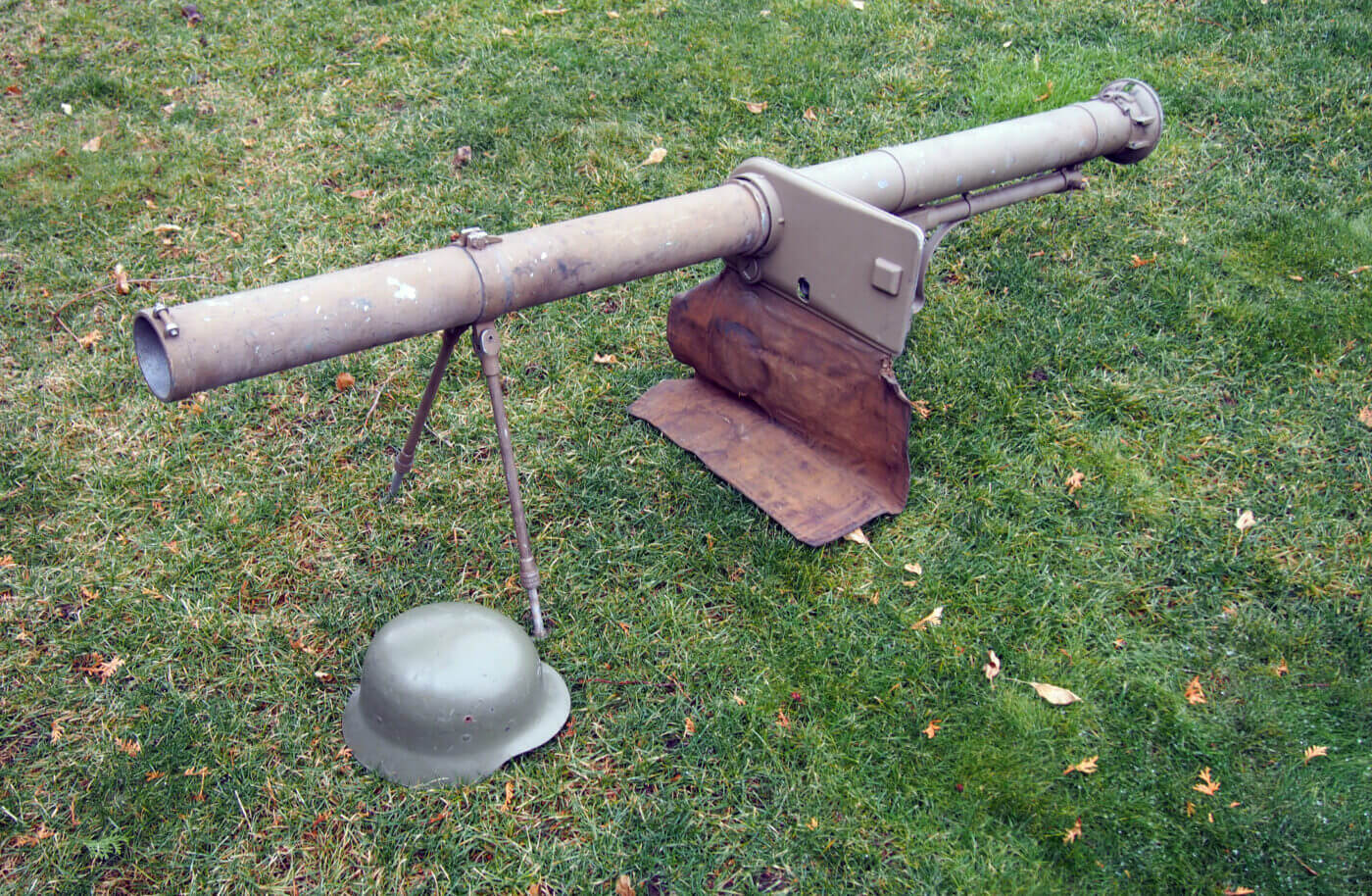
Spain produced its 88.9mm Instalaza M65 anti-tank launcher, which featured an improved ignition system. However, that required that it be outfitted with a blast shield. It is worth noting that in the 1965 war film The Battle of the Bulge, the M65 stands in for World War II bazookas, just one of many problems with that particular film!
Another notable variant of the bazooka was the Belgian-produced RL-83 Blindicide (“armor killer”), which was developed in the 1950s. It was also lightweight as it was made of fiberglass and aluminum. This improved derivative of the M20A1 featured a higher rate of fire thanks to the use of a mechanical firing pin, which was employed in its ignition system.
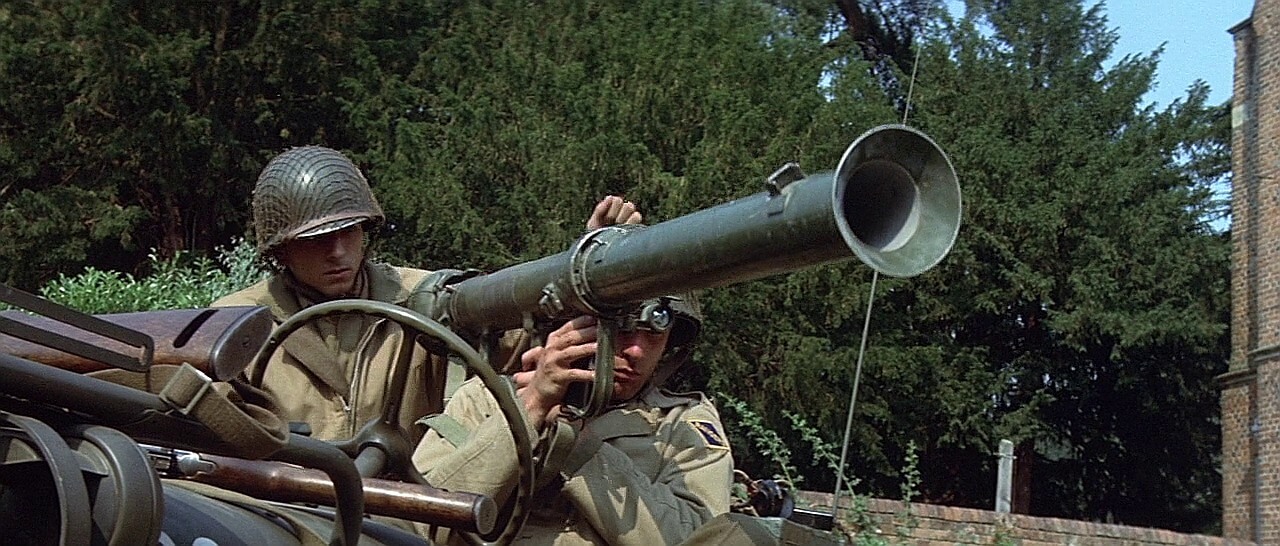
The Blindicide saw use with the Belgian Army during the Congo Crisis where it was reportedly a favored anti-tank weapon of various mercenary forces. It was later used by anti-British insurgents in the Aden Emergency and was used to good success by the Israel Defense Force (IDF) during the Six-Day War and Yom Kippur War. There are even reports that suggest the Free Syrian Army has continued to use the aging weapon in the ongoing Syrian Civil War.
Editor’s Note: Please be sure to check out The Armory Life Forum, where you can comment about our daily articles, as well as just talk guns and gear. Click the “Go To Forum Thread” link below to jump in!
Join the Discussion
Continue Reading
Did you enjoy this article?

 241
241






